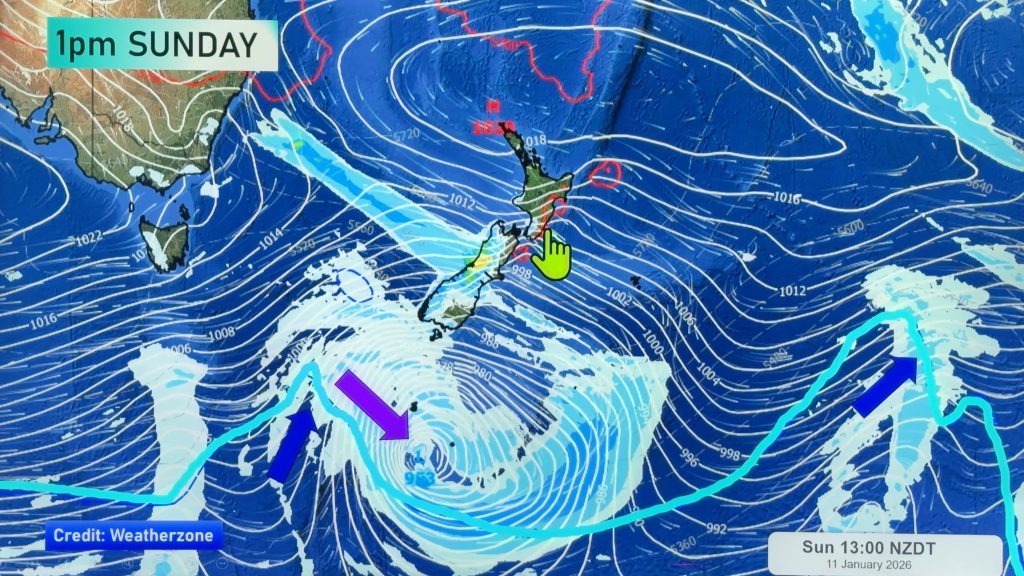
> From the WeatherWatch archives
It was late at night when the priest raised the alarm.
Heavy rain was falling on Gobindghat, a town in the foothills of the Himalayas where Sikh pilgrims stop on their way to a holy site farther into the mountains.
A monsoon deluge had swept in earlier and heavier than usual in this part of northern India, bringing a risk of floods.
But before residents and pilgrims in the town could heed the priest’s warning, water had engulfed the town.
“Some people climbed upwards, some ran here and there,” said Gurjit Singh, who had traveled to Gobindghat with his 12-year-old son. “It was chaos.”Flood washes cars away in India Barrages of water, mud and rocks have hit scores of towns and villages in the Indian state of Uttarakhand in the past week, inundating homes, shrines, roads and vehicles.
Uttarakhand’s chief minister, Vijay Bahuguna, has described the disaster as a “Himalayan tsunami.”
Dotted with temples and often referred to as “the Land of Gods,” Uttarakhand attracts large numbers of pilgrims from around India to its mountainous reaches. Those travelers, many of them far from home and short on belongings, are now caught up in the destruction.
Thousands of rescue workers are trying to reach more than 50,000 people cut off by the waters. Bahuguna told CNN’s sister network CNN-IBN on Friday night that the death toll was 556 but could rise. The bodies “were either buried or floating in slush,” he said. It will take 15 days to complete evacuations in the province, he added.
Other parts of northern India, including New Delhi, have also been hit by flooding, but Uttarakhand has suffered the worst of the devastation.
The rains over the region have eased in the past few days, aiding in the rescue of about 30,000 people, Bahuguna said.
‘A second life’
“There was nothing but death in front of us,” Singh said Thursday after getting out of a crowded car ferrying people to dry, flat land. “Now that we’ve got out, we feel like we’ve got a second life.”
His son, Rana Udesh Pratap, said the trek to safety was long.
“I held my father’s hand and walked and walked and walked on a narrow path,” he said. The two had made a pilgrimage to Uttarakhand from the nearby state of Punjab to visit the Sikh Hemkunt Sahib shrine.
Others were still struggling with what they had endured.
A man named Kailash told CNN-IBN that he, his wife and 4-year-old son didn’t know how they were going to get back to their home in Jodhpur, hundreds of kilometers to the southwest.
“We don’t have a penny, how will we reach home?” he asked, explaining that his family had gone hungry for three days before they were evacuated to a hospital in the town of Rudrapyrayag.
They had been in Kedarnath, a centuries-old Hindu holy town at the heart of the destruction. Pictures show the town’s temple surrounded by mud and rocks.
Kailash recalled what he and his family endured before they were flown out.
“We had to walk over dead bodies,” he said. “Nothing is left there, everything is finished. We can’t even find our relatives.”
A search for the missing
Others were searching for relatives amid the chaos. A Facebook page for rescue and relief in Uttarakhand was peppered with pleas for help in finding people.
“It is with great hope that I am writing to you to alleviate the distress of my family,” wrote Shantalu Srivastava in a post seeking information about his brother, sister-in-law and two nieces.
Srivastava said that the family had traveled to Kedarnath from Lucknow, in the neighboring state of Uttar Pradesh, and that he had last heard from them Sunday.
The national government has dispatched the army to help with rescue efforts and promised 10 billion rupees ($170 million) in disaster relief funds to the Uttarakhand government.
Some observers are saying the disaster was man-made.
Devinder Sharma, an environmentalist, blamed industrial activity in India’s Himalayan region.
“This havoc is a result of massive deforestation and mining,” he said. “It’s an ecocide.”
– CNN
Comments
Before you add a new comment, take note this story was published on 21 Jun 2013.





Add new comment